Neuropsychology of Memory Memory FAQ: •

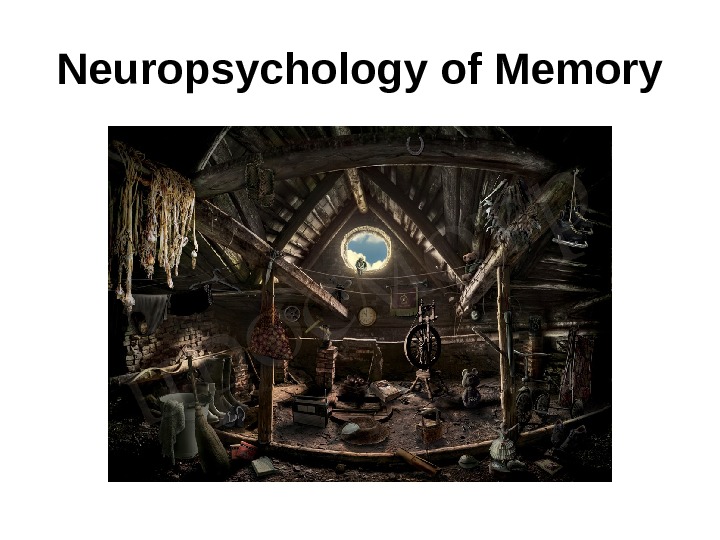
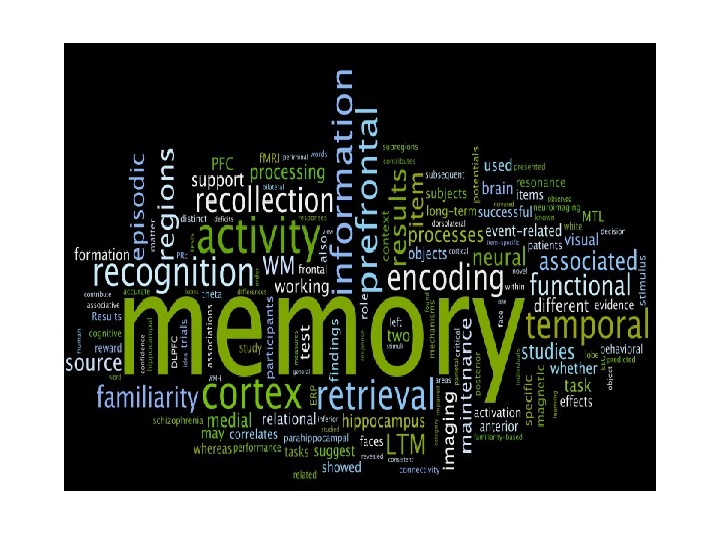
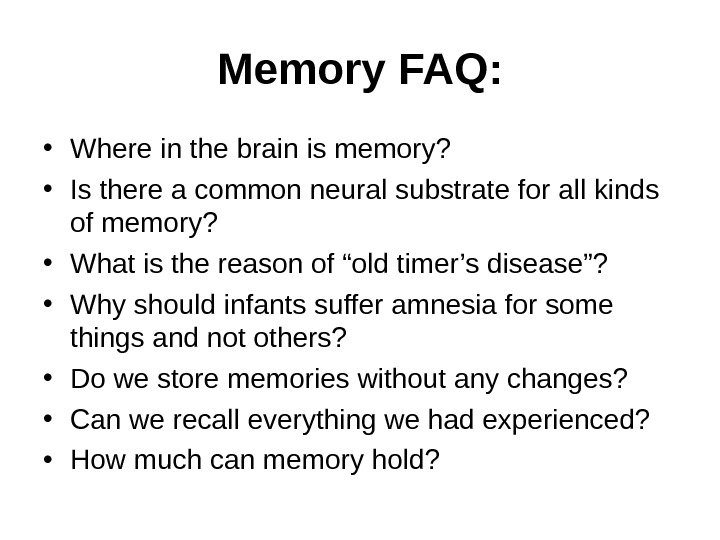
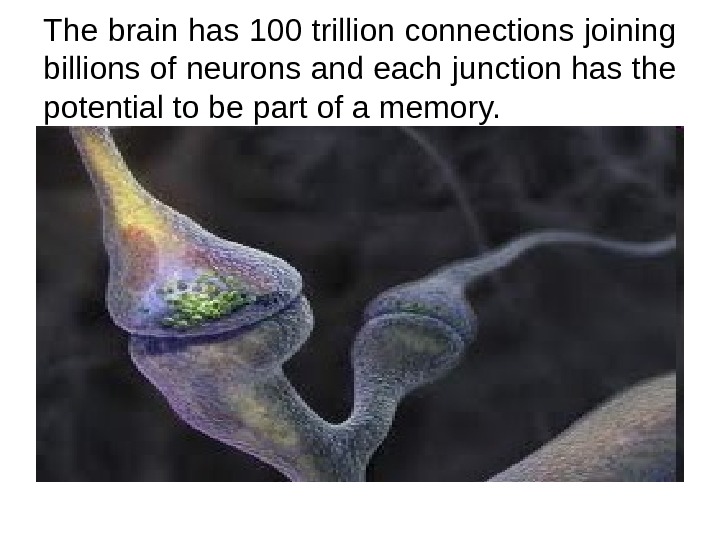
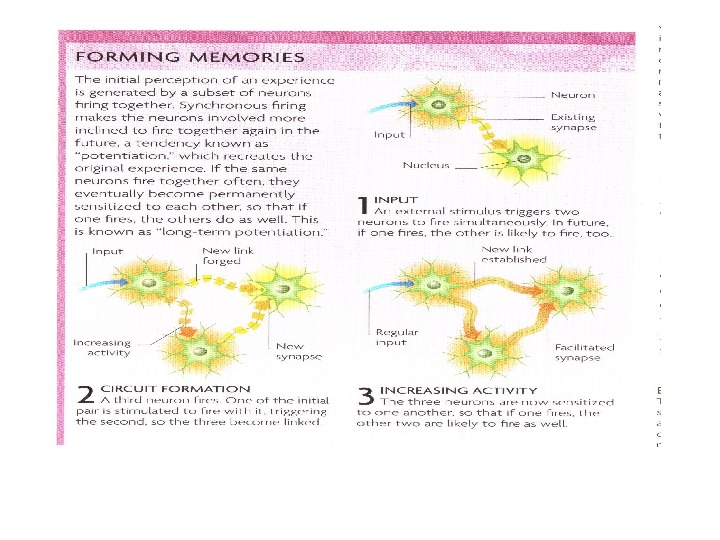
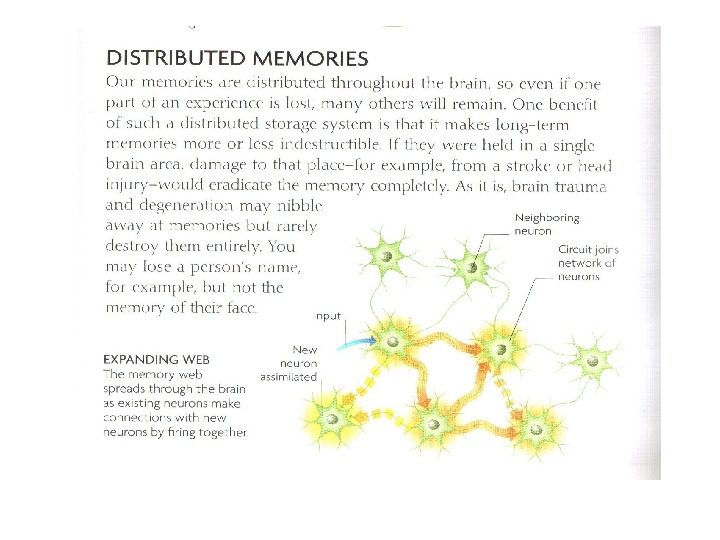
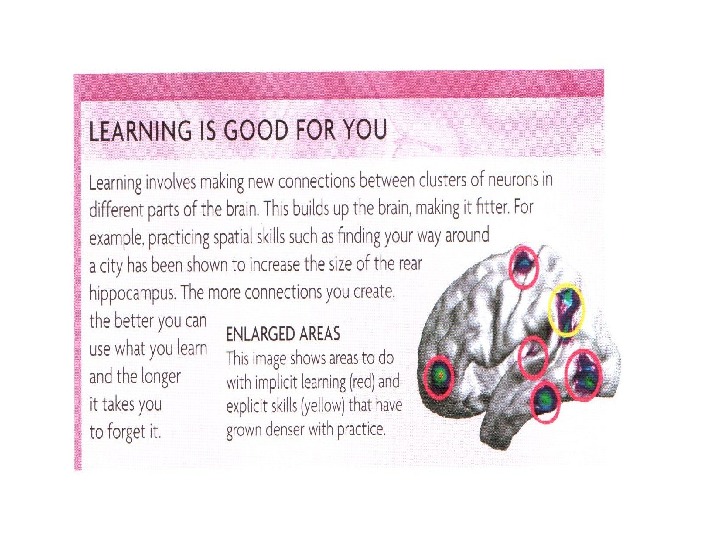
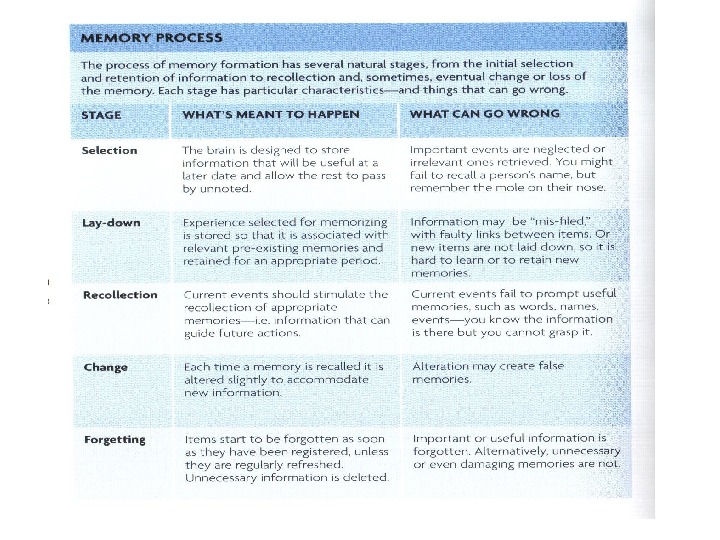
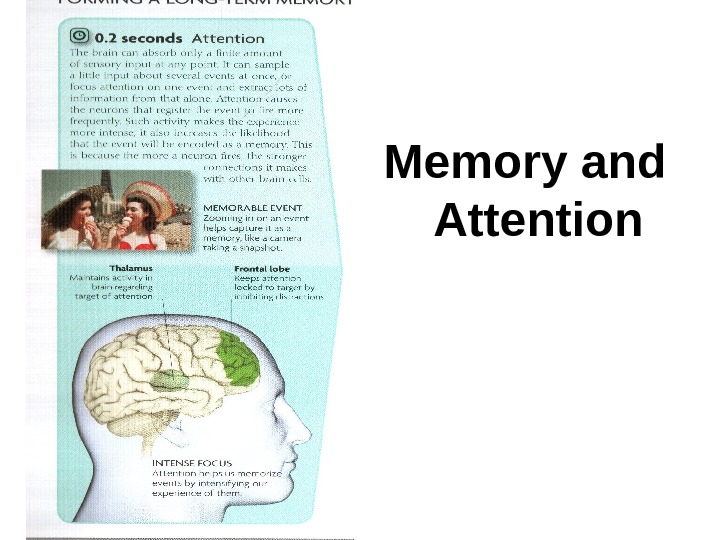
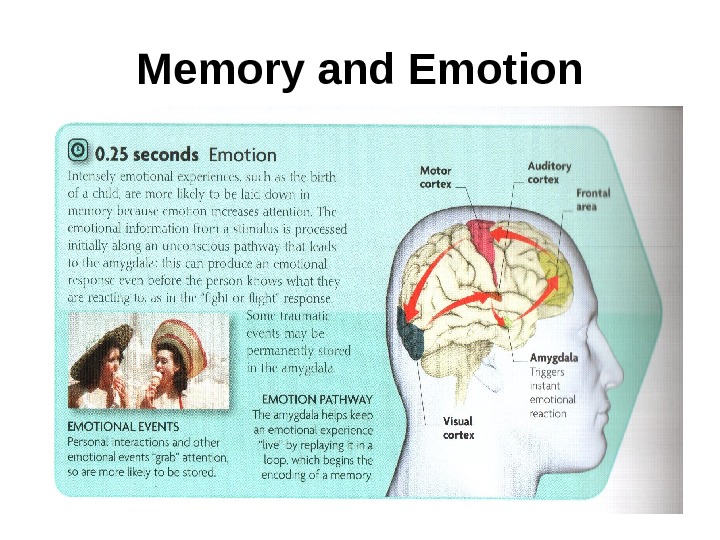
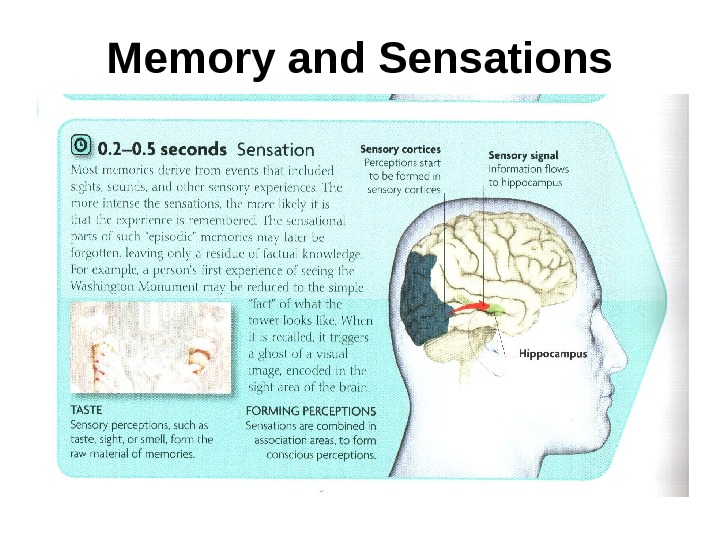
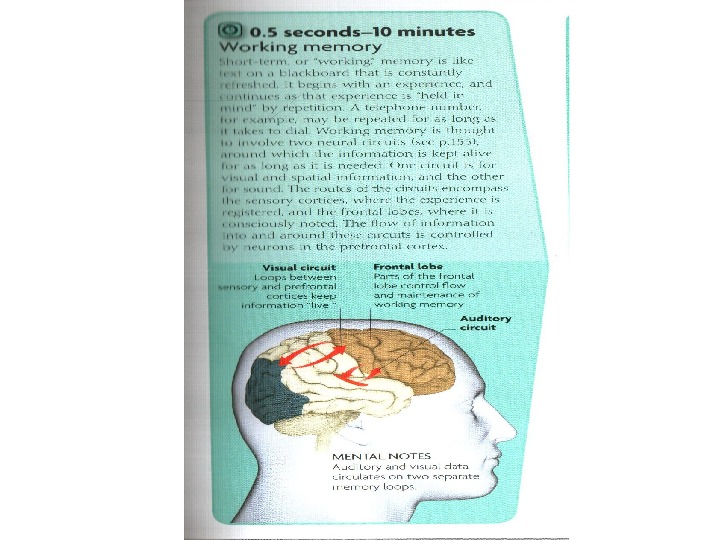
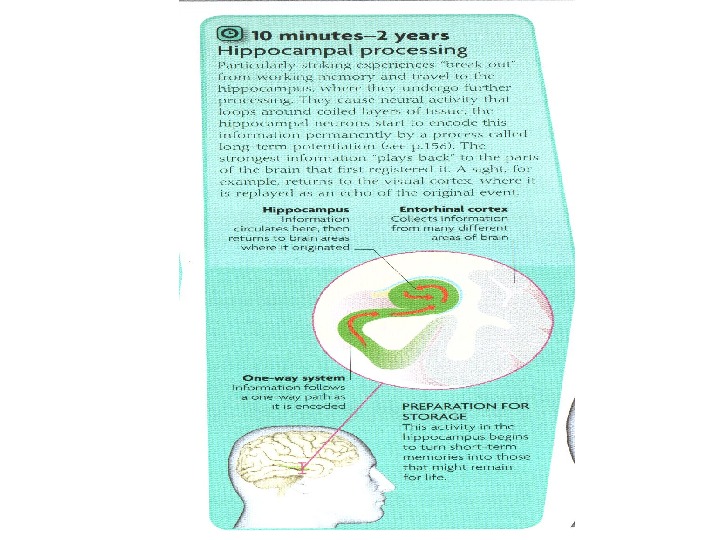
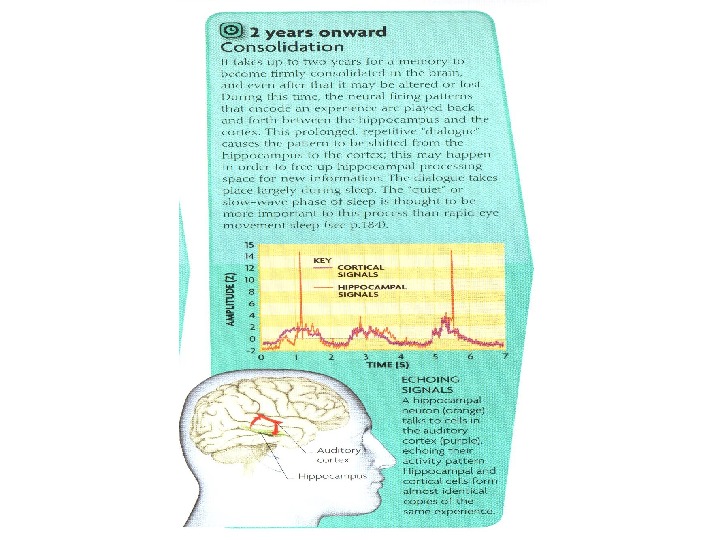
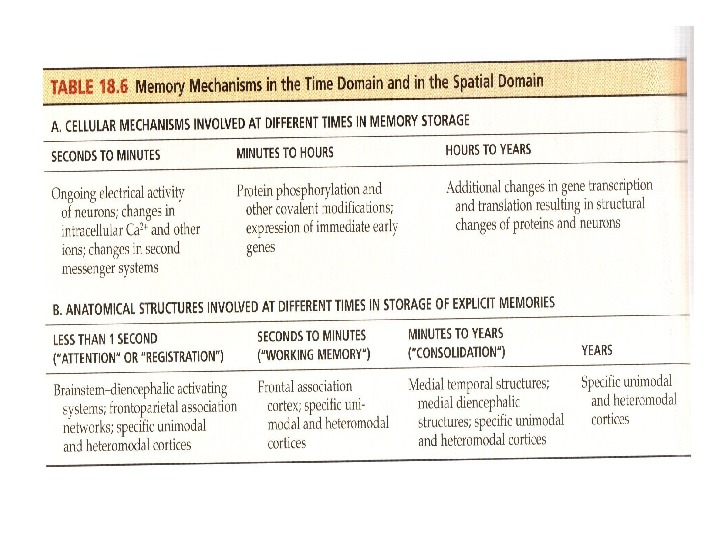
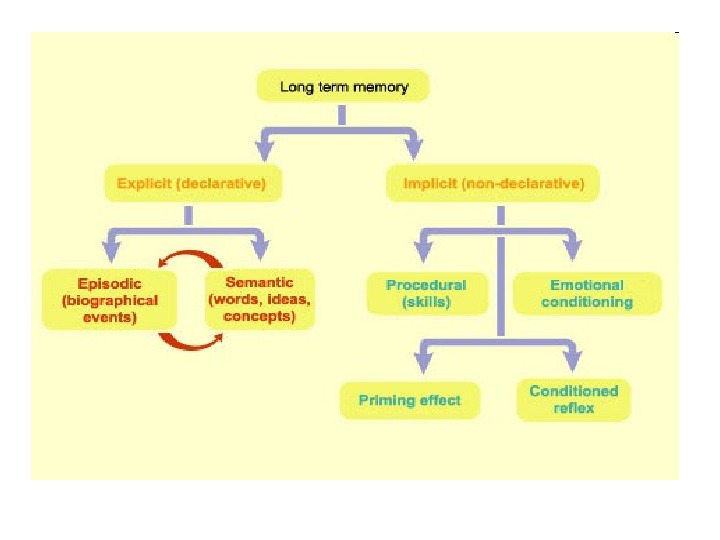
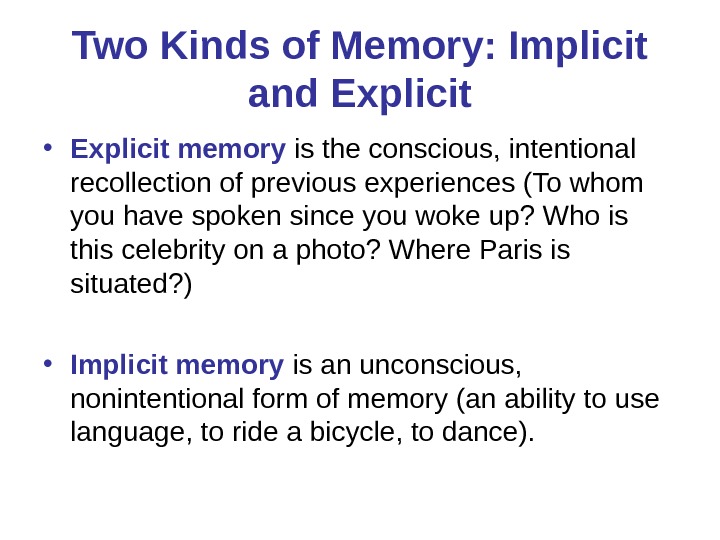
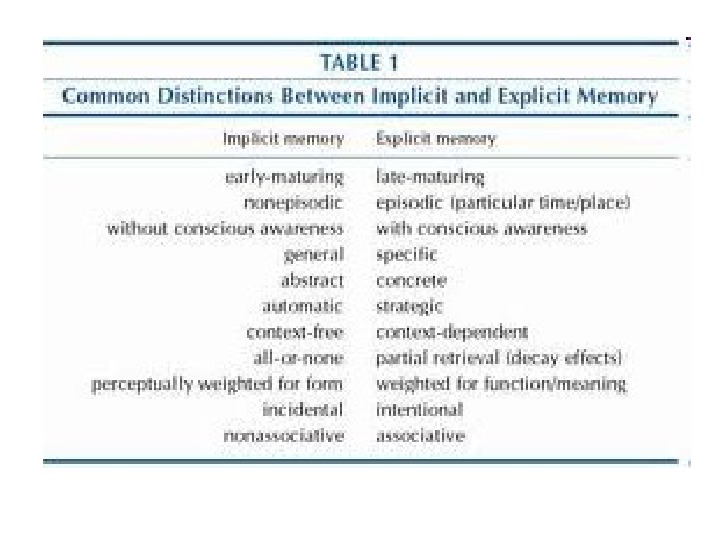
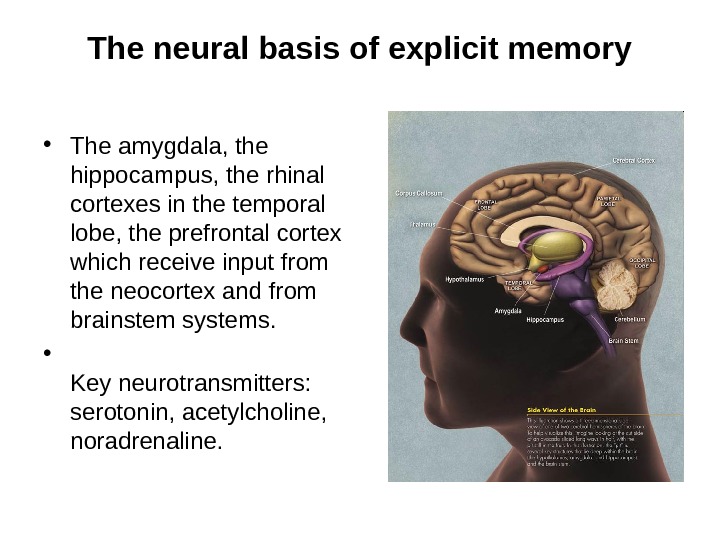
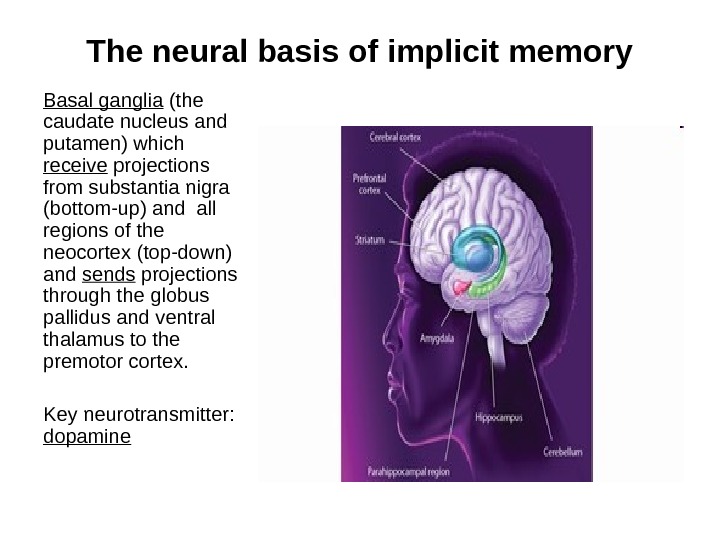
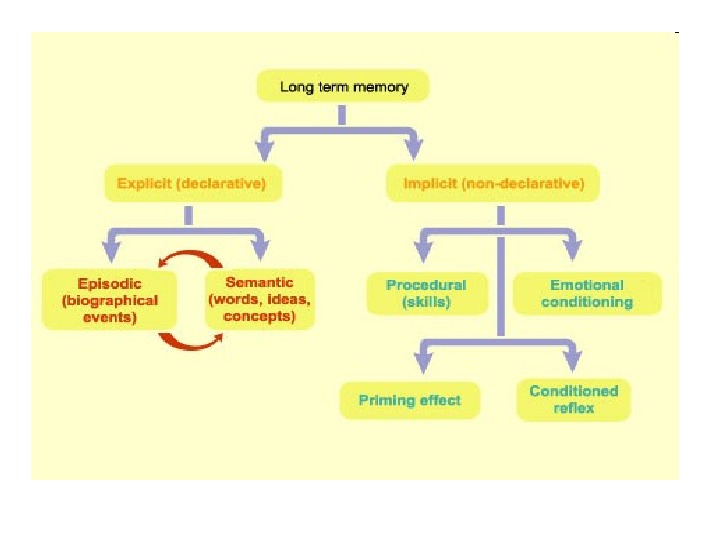
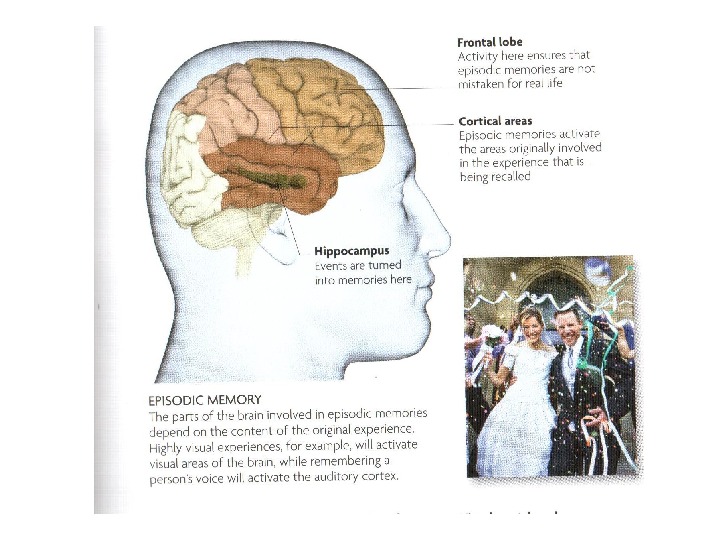
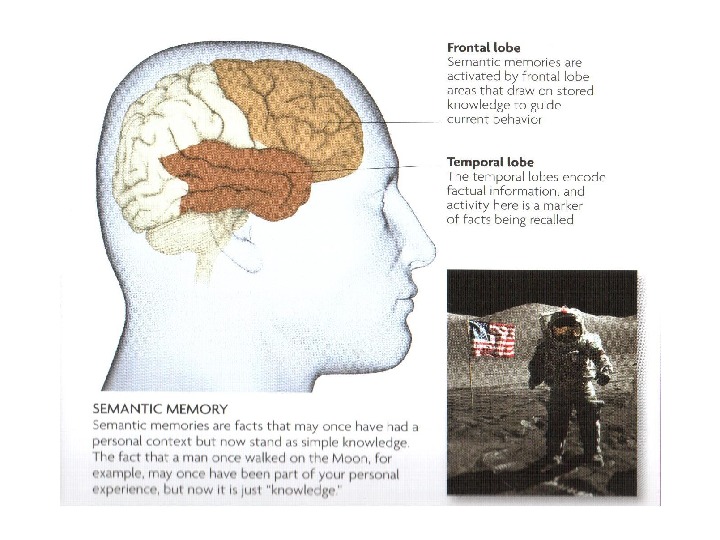
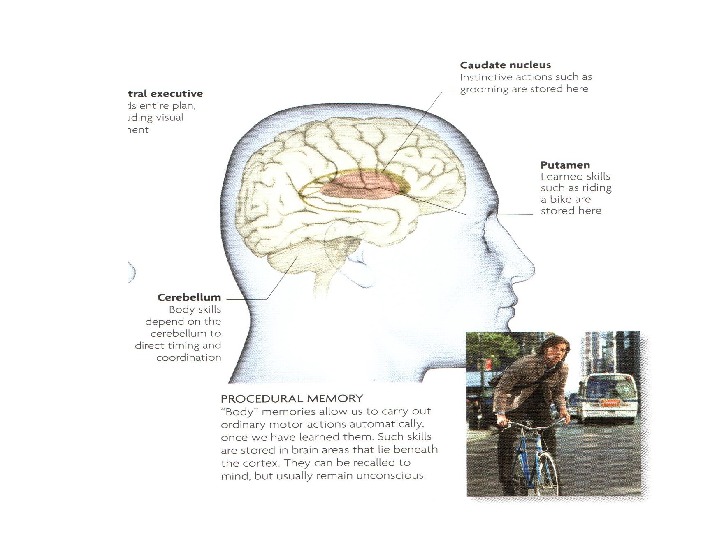
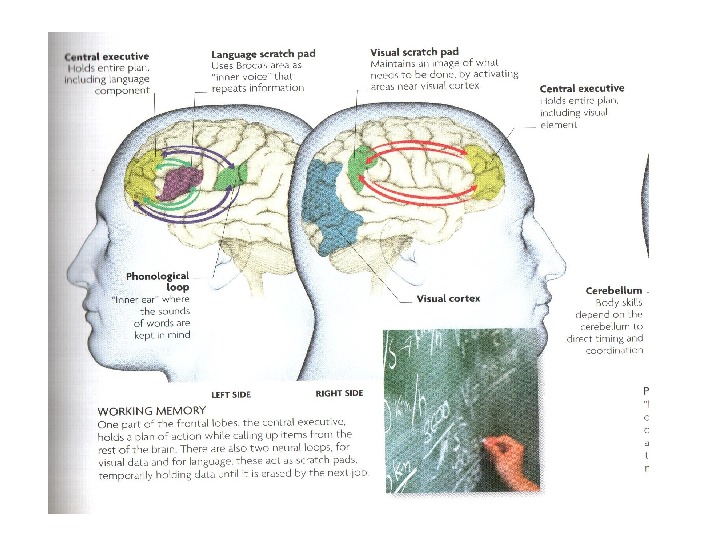
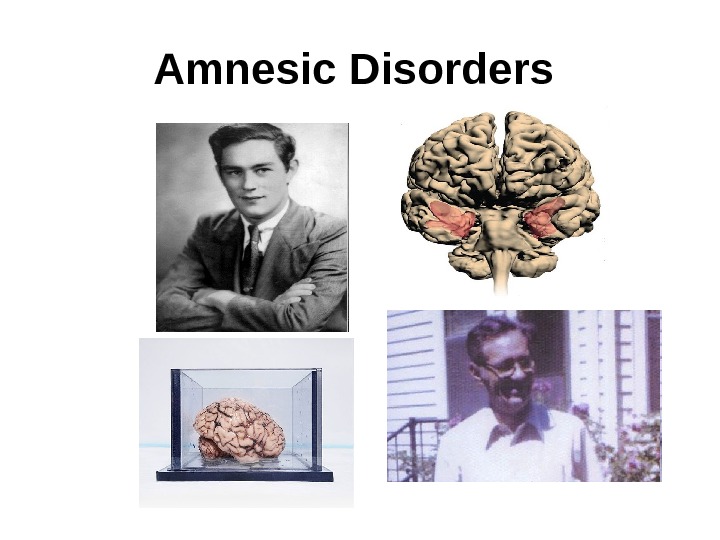
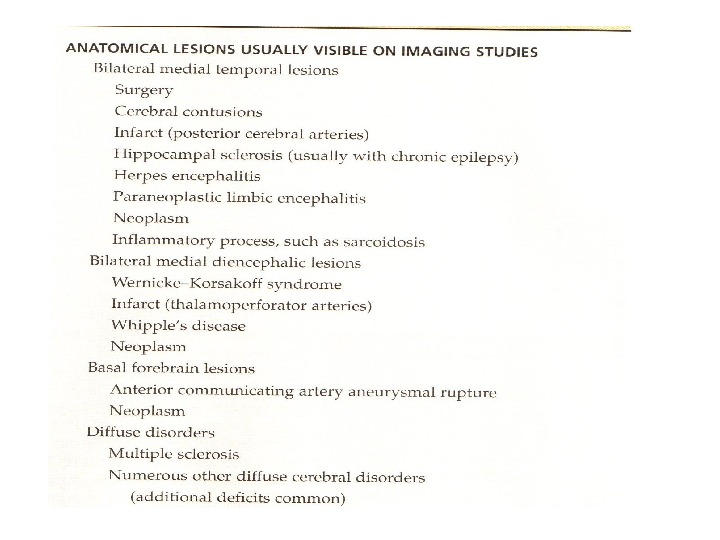
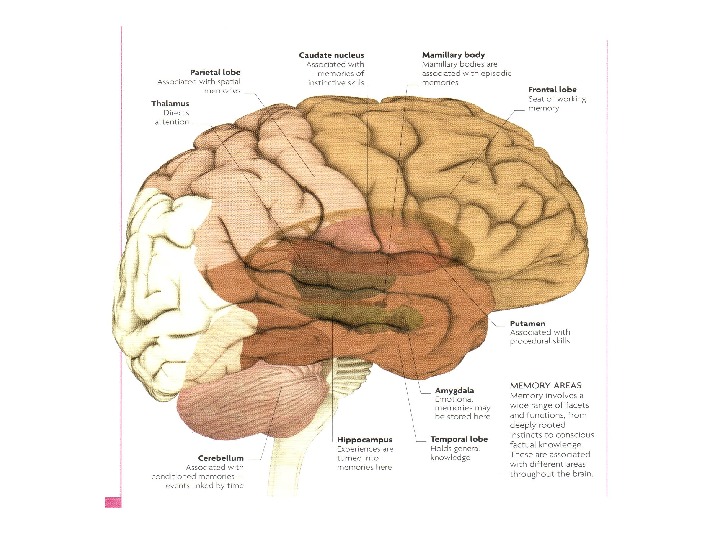
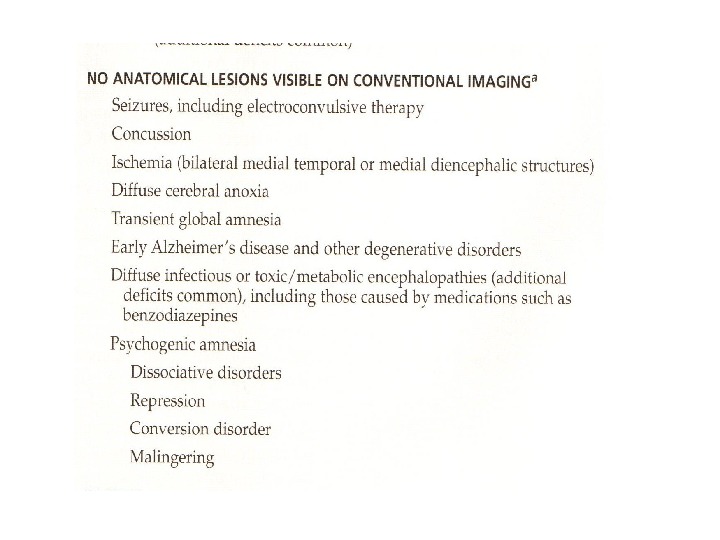
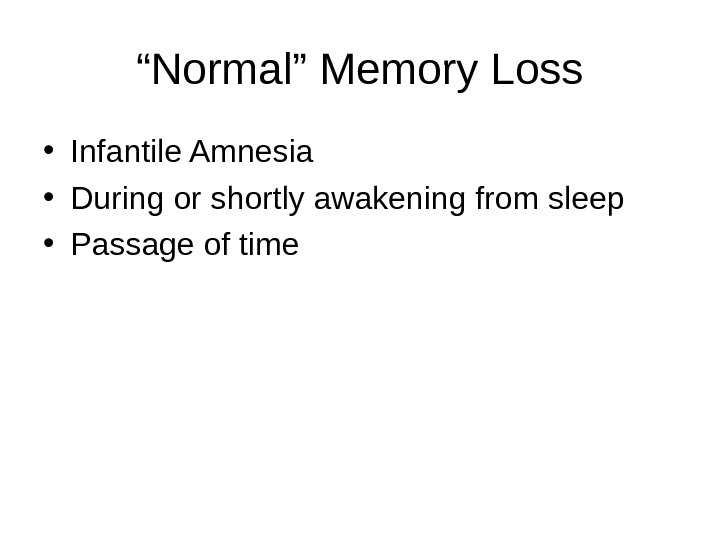

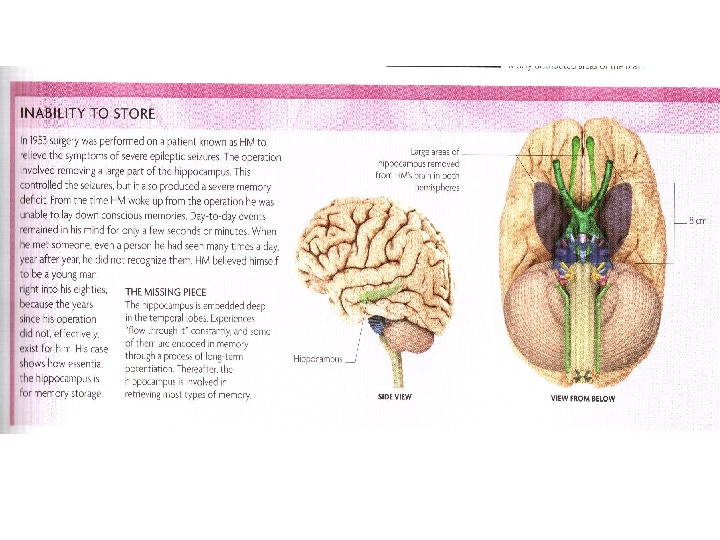
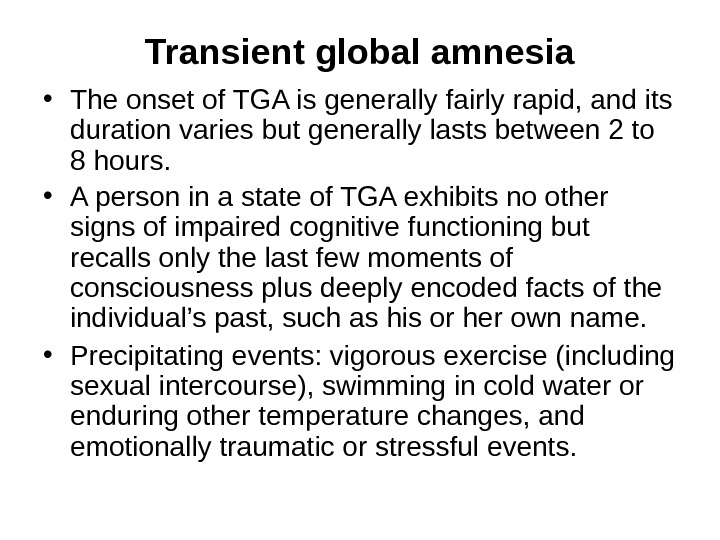
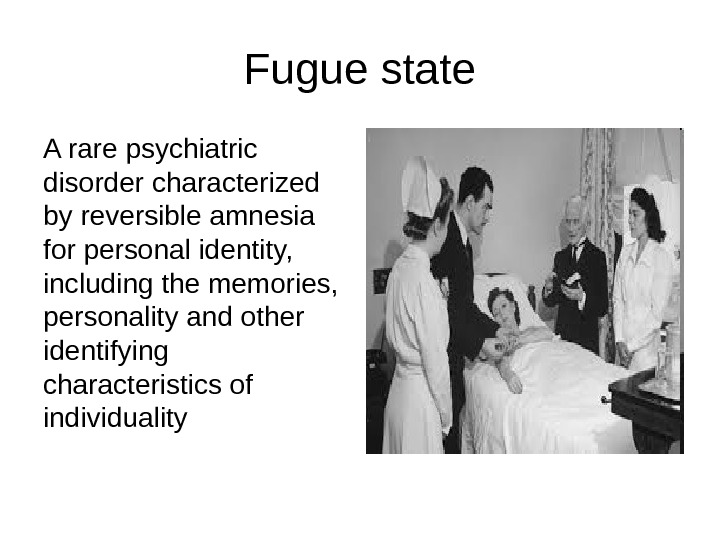

- Размер: 12.4 Mегабайта
- Количество слайдов: 35
Описание презентации Neuropsychology of Memory Memory FAQ: • по слайдам
 Neuropsychology of Memory
Neuropsychology of Memory

 Memory FAQ: • Where in the brain is memory? • Is there a common neural substrate for all kinds of memory? • What is the reason of “old timer’s disease”? • Why should infants suffer amnesia for some things and not others? • Do we store memories without any changes? • Can we recall everything we had experienced? • How much can memory hold?
Memory FAQ: • Where in the brain is memory? • Is there a common neural substrate for all kinds of memory? • What is the reason of “old timer’s disease”? • Why should infants suffer amnesia for some things and not others? • Do we store memories without any changes? • Can we recall everything we had experienced? • How much can memory hold?
 The brain has 100 trillion connections joining billions of neurons and each junction has the potential to be part of a memory.
The brain has 100 trillion connections joining billions of neurons and each junction has the potential to be part of a memory.




 Memory and Attention
Memory and Attention
 Memory and Emotion
Memory and Emotion
 Memory and Sensations
Memory and Sensations





 Two Kinds of Memory: Implicit and Explicit • Explicit memory is the conscious, intentional recollection of previous experiences (To whom you have spoken since you woke up? Who is this celebrity on a photo? Where Paris is situated? ) • Implicit memory is an unconscious, nonintentional form of memory (an ability to use language, to ride a bicycle, to dance).
Two Kinds of Memory: Implicit and Explicit • Explicit memory is the conscious, intentional recollection of previous experiences (To whom you have spoken since you woke up? Who is this celebrity on a photo? Where Paris is situated? ) • Implicit memory is an unconscious, nonintentional form of memory (an ability to use language, to ride a bicycle, to dance).

 The neural basis of explicit memory • The amygdala, the hippocampus, the rhinal cortexes in the temporal lobe, the prefrontal cortex which receive input from the neocortex and from brainstem systems. • Key neurotransmitters: serotonin, acetylcholine, noradrenaline.
The neural basis of explicit memory • The amygdala, the hippocampus, the rhinal cortexes in the temporal lobe, the prefrontal cortex which receive input from the neocortex and from brainstem systems. • Key neurotransmitters: serotonin, acetylcholine, noradrenaline.
 The neural basis of implicit memory Basal ganglia (the caudate nucleus and putamen) which receive projections from substantia nigra (bottom-up) and all regions of the neocortex (top-down) and sends projections through the globus pallidus and ventral thalamus to the premotor cortex. Key neurotransmitter: dopamine
The neural basis of implicit memory Basal ganglia (the caudate nucleus and putamen) which receive projections from substantia nigra (bottom-up) and all regions of the neocortex (top-down) and sends projections through the globus pallidus and ventral thalamus to the premotor cortex. Key neurotransmitter: dopamine





 Amnesic Disorders
Amnesic Disorders



 “ Normal” Memory Loss • Infantile Amnesia • During or shortly awakening from sleep • Passage of time
“ Normal” Memory Loss • Infantile Amnesia • During or shortly awakening from sleep • Passage of time
 Amnesia subtypes: bitemporal vs. diencephalic amnesia • Bitemporal (global anterograde) amnesia (HM case) – mostly temporal lobe pathology. • Diencephalic (Alcoholic Korsakoff disease) – thalamic, mammillary body lesion and frontal lobe damage: impairment in temporal order judgment, source monitoring (source amnesia), metamemory and feeling of knowing (estimation of one’s own memory capabilities — FOK).
Amnesia subtypes: bitemporal vs. diencephalic amnesia • Bitemporal (global anterograde) amnesia (HM case) – mostly temporal lobe pathology. • Diencephalic (Alcoholic Korsakoff disease) – thalamic, mammillary body lesion and frontal lobe damage: impairment in temporal order judgment, source monitoring (source amnesia), metamemory and feeling of knowing (estimation of one’s own memory capabilities — FOK).

 Transient global amnesia • The onset of TGA is generally fairly rapid, and its duration varies but generally lasts between 2 to 8 hours. • A person in a state of TGA exhibits no other signs of impaired cognitive functioning but recalls only the last few moments of consciousness plus deeply encoded facts of the individual’s past, such as his or her own name. • Precipitating events: vigorous exercise (including sexual intercourse), swimming in cold water or enduring other temperature changes, and emotionally traumatic or stressful events.
Transient global amnesia • The onset of TGA is generally fairly rapid, and its duration varies but generally lasts between 2 to 8 hours. • A person in a state of TGA exhibits no other signs of impaired cognitive functioning but recalls only the last few moments of consciousness plus deeply encoded facts of the individual’s past, such as his or her own name. • Precipitating events: vigorous exercise (including sexual intercourse), swimming in cold water or enduring other temperature changes, and emotionally traumatic or stressful events.
 Fugue state A rare psychiatric disorder characterized by reversible amnesia for personal identity, including the memories, personality and other identifying characteristics of individuality
Fugue state A rare psychiatric disorder characterized by reversible amnesia for personal identity, including the memories, personality and other identifying characteristics of individuality
 Memory Functions Spared in Amnesia Preserved pre-illness memory • Intact knowledge structure (context-free general knowlege) • Motor and cognitive skills (playing piano, sports, using dictionary) • Preferences (color, clothes, food, people, dangerous objects) Preserved new learning capacities (mostly implicit) • Skill learning (mirror drawing) • Repetition priming (word-fragment completion task) Classical conditioning Electrophysiological responses
Memory Functions Spared in Amnesia Preserved pre-illness memory • Intact knowledge structure (context-free general knowlege) • Motor and cognitive skills (playing piano, sports, using dictionary) • Preferences (color, clothes, food, people, dangerous objects) Preserved new learning capacities (mostly implicit) • Skill learning (mirror drawing) • Repetition priming (word-fragment completion task) Classical conditioning Electrophysiological responses

